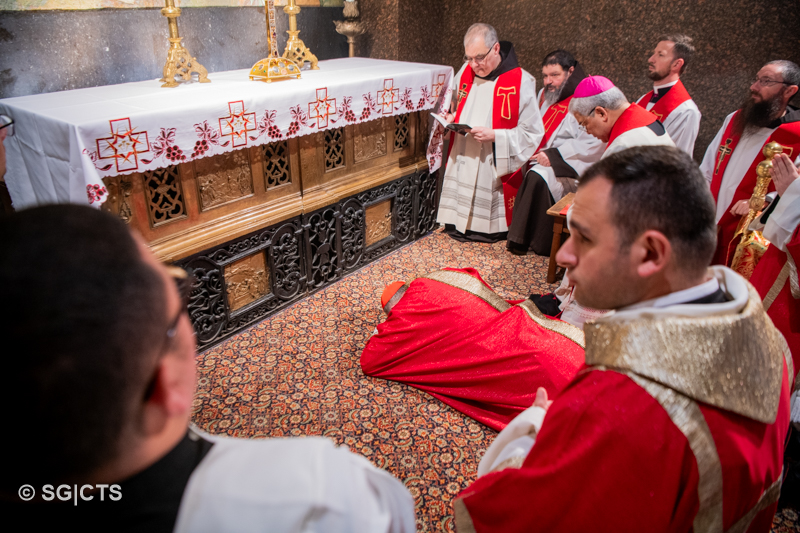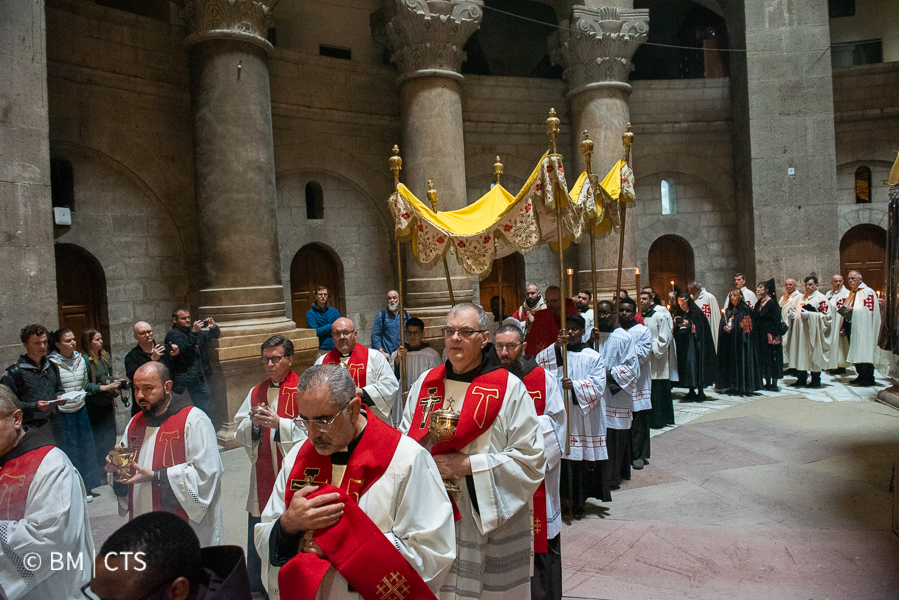
On Good Friday, the day of contemplation of the wooden cross of Christ, the Church of Jerusalem has the task of celebrating and contemplating this mystery in the place where it all happened: the Calvary, inviting religious, pilgrims and local worshippers to enter more intimately into the mystery of the Passion of Christ.
To foster this intimate union, there are three celebrations on Friday 29 March: the commemoration of the Passion on Calvary and the Via Crucis, in the morning and the mimesis of the Passion in the Funeral Procession, in the evening.

The Latin Patriarch of Jerusalem, H.E. Cardinal Pierbattista Pizzaballa, presided the celebration of the “Passion of the Lord”.
The site of the Calvary turned red, the liturgical colour worn by the numerous priests and ministers present and which recalls the blood spilt by Jesus on the cross: the relic of the Holy Cross was placed on the altar of the Latins at the start of the celebration.
The liturgy of Good Friday is in three parts: the liturgy of the Lord, the Adoration of the Cross and the Eucharistic Communion.
The readings anticipated the singing of the piece of the Passion according to John (John 18,1 - 19,42), alternated between three Franciscan cantors and the choir of the Custody of the Holy Land. Silence accompanied and followed one of the most solemn moments of the celebration, when a cantor proclaimed the verse of the death of Jesus in front of the Greek altar, placed on the rock of Calvary.

In the second part of the celebration, the Holy Cross was presented to the faithful for veneration, with a rite that dates back to the 4th century.
Lastly, the deacons went to the Edicule of the Holy Sepulchre ‒ which became a Tabernacle on Holy Thursday – to take the ciboria with the consecrated hosts and take them in a procession to Golgotha. After saying the Lord’s Prayer, the Eucharist was distributed to the faithful, who through communion with the Lord’s Body, were nourished by the Mystery of the Cross.
Silvia Giuliano
